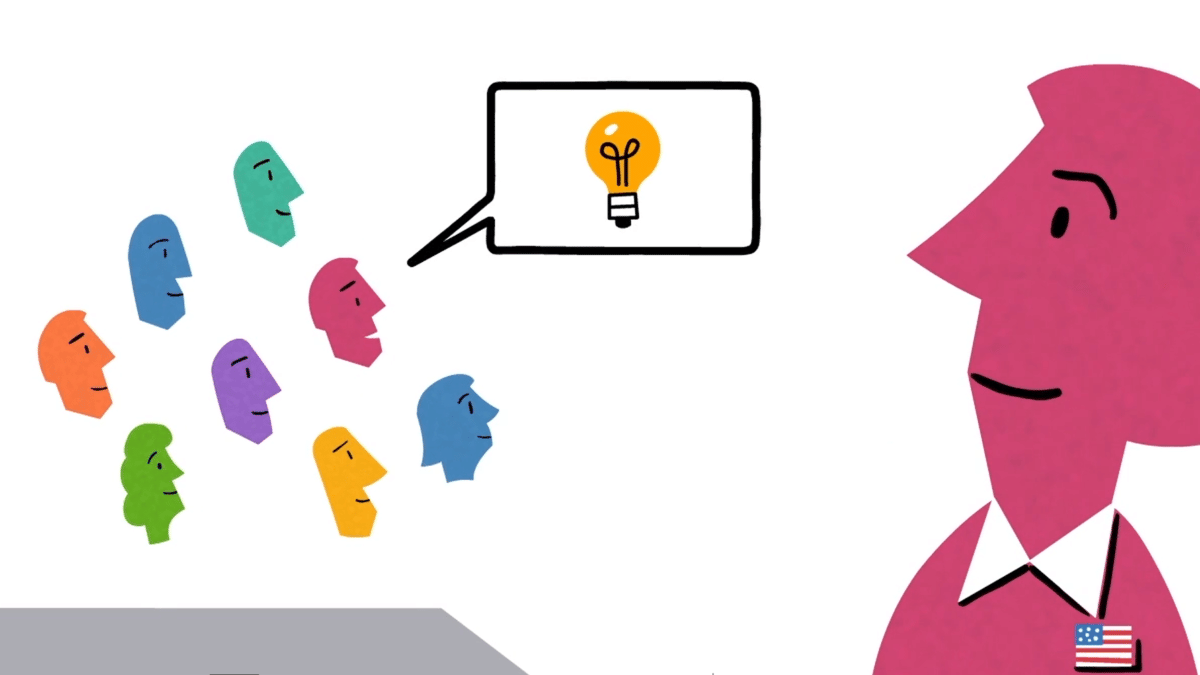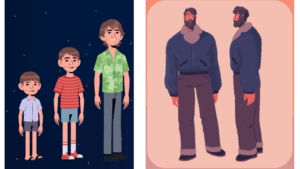The COVID-19 crisis has moved 2020 campaign activities online. In this environment, political campaign ads are more important than ever. They may be the only chance a campaign has to get in front of voters. But with restrictions on group gatherings, shooting a live-action campaign video is nearly impossible. Fortunately for campaigners, there is another option—animation.
Don Sipple, President of Sipple Strategic Communications has crafted dozens of successful campaigns over the years. “I do a lot of ballot measure campaigns—animation in my view, facilitates simplifying substance in a visually interesting way,” Sipple said.
To put that another way, whether your campaign is promoting a candidate for office or educating voters on a vital issue, animated videos can help you make your point.
Disclaimer: The videos linked below are great examples of animated videos for political campaigns, and that’s why we chose to feature them. The views and opinions expressed are those of the advertisers and do not necessarily reflect the views of IdeaRocket, it’s staff, or the writer.
Techniques: Animated video for political campaigns
Sipple isn’t the only marketer who believes in the power of animated political campaigns.
As it turns out, politics and advocacy groups have been using animation for decades. Consider this Eisenhower for president ad from 1952.
Dated as this ad might appear to the modern eye, it’s also warm and eye catching. The jingle sticks in your mind and the simple 2-D animation style would have been familiar to voters at the time.
For a more modern example, consider the standard negative ad showing black and white photos of an opponent complete with intense music and quotes from candidates or news sources.
This composite style combines live action clips with animated elements to drive home a point. Without the flashing arrows and moving backgrounds, this ad would be much less effective.
Whiteboard animation is another common technique for political advertisements. Sipple said he likes whiteboard animation because it’s visually interesting, quick and inexpensive. Here is a video IdeaRocket produced for Sipple’s firm on behalf of Prop 52, a California Ballot Measure that won approval.
Notice how the simplified color palette and symbolic images help viewers follow the key message: Prop52 has broad support. Without including any live actors, this video still relies on social proof. It implies that a large group of people endorse this proposition, so you should too.
Why cast your ballot for animated video?
As Sipple mentioned, animation excels at making complex topics easy to understand. Take our video on Congressional Communities, for example. It introduces average voters to a new community-based model that can impact and inform political discourse.
The simple animation in this video strips out unnecessary details that might lead to distractions. You can’t tell the race, age, or socio-economic status of the characters in this cartoon. That can be useful for a message like this because the topic applies to everyone. The animated character acts as a placeholder. Any viewer can image themselves in that place.
With animated video for political campaigns you can:
- Illustrate complicated ideas
- Liven up a dry topic
- Engage your audience
- Remove distractions
- Appeal to multiple voting demographics equally
Animated ads are also relatively quick to produce—in some cases, no more than a couple of days. That means you can respond to breaking news or quickly adjust your messaging to meet new challenges.
Of course, in this time of social distancing, live video has become more difficult to shoot. Avoid gathering camera crews, casts of actors, and other production staff. Animations can do the job just as well without large gatherings.
Intensifying a trend in political advertising
As the public adjusts its idea of what a candidate can look like, it’s also adjusting its idea of what campaign ads are. Although COVID-19 is pushing more candidates and causes to move their political campaigns online, the virus is fueling an existing trend.
More candidates are turning to less formal, more personal videos to propel their campaigns. These videos spread online and sometimes even go viral.
“Digital has shrunk everything….window of opportunity; time window; and screen,” Sipple said. “You now have 10 or 15 seconds to get the job done.”
Animation is one way that candidates can make themselves relatable and reach more diverse audiences.
Animation can also help political action committees and other third party groups get their message across. In this 15-second spot IdeaRocket produced endorsing Luz Rivas for Assembly, we use a drawing of the candidate in place of actual footage of her. This avoids a complex video shoot or the need for stock footage. Instead, we create a warm, personal advertisement using animation.
Tips for creating animated campaign videos
If you’re making animated videos for political campaigns, these tips will help you create engaging and effective animations that support your campaign goals.
- Choose an animation style to match your message. Animation can be bright and colorful, dark and brooding, serious, silly and anything in between. Choose a style that enhances your message. If you’re not sure how to do this, your design team can help you decide.
- Keep it short and simple. A short video will hold viewer attention more easily than a long one. In this case, short means less than 2 minutes.
- Avoid self-centered advertising. One big mistake that some campaigns make is focusing on the ego of the candidate instead of the orientation and interests of the viewer, Sipple said. As with any advertisement, an audience-centered approach works best.
- Give it character. Smiling faces build trust. Your characters need not be completely lifelike, but every video should include someone that the audience can relate to. As noted in the congressional communities example, ambiguous characters can sometimes be more compelling than a lifelike representation of a real person.
- Don’t rely on sound. A stirring soundtrack can increase the emotional impact of a video, but keep in mind that many online viewers watch videos without sound. Make sure the intent of your video is clear even if the sound is off.
- Distribute everywhere. A TV commercial is just one way to use your animated video. But don’t stop there. Get your message out by sharing on social, emailing your constituents, posting to YouTube or other video sites, and adding it to your website or blog.
Animation is flexible, customizable, and abides by social distancing guidelines. Think creatively to give your candidate some character or illustrate your issue with animated videos for political campaigns. IdeaRocket, can help. Contact us to get started.



